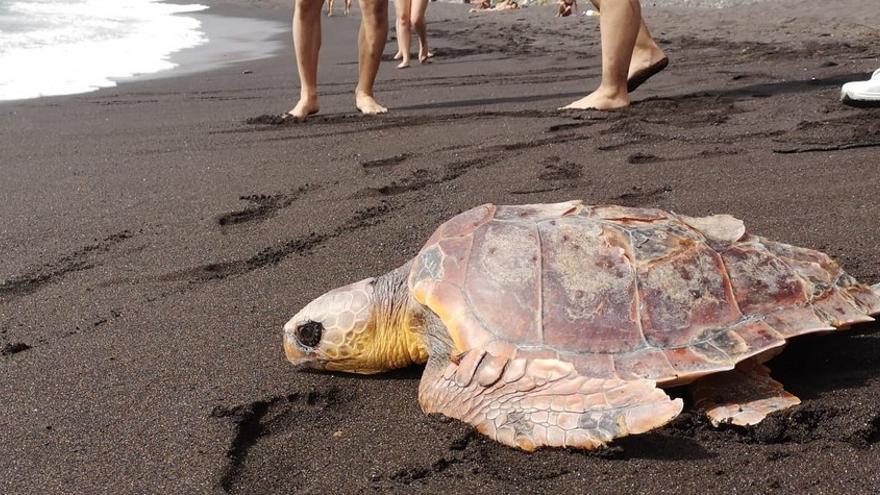
He Council of Tenerifethrough the Wildlife Recovery Center (CRFS) of La Tahonilladependent on the Natural Environment and Security Management area, has released two specimens of turtles on the beach of La Nea, municipality of El Rosario caretta caretta that were recovered in the center. In 2022, the CRFS received 107 turtle specimens, 104 belonging to the species caretta caretta and three specimens of green turtles (Chelonia mydas). Recovered turtles are cared for and fed until they reach the point where they are capable of swimming properly and hunting autonomously, at which point they are ready to be released back into the Atlantic.
Different interventions
The first of them was located on March 11 while swimming with difficulty near the coast of Los Gigantes, in Santiago del Teide. The animal was with a fishing net attached to the right front flipper. After being rescued, the CRFS received the animal to begin its recovery and rehabilitation process.
After the first inspection, it was determined that the entangled fin should be amputated due to the clear symptoms of necrosis and the risk of the disease spreading to the rest of the body. Therefore, the fin was amputated and then began its recovery process. After approximately three weeks, the turtle passed the rehabilitation and recovery period and was returned to the sea to continue its proper development.
On the other hand, the second specimen was located on March 7, while swam several miles from Puerto Colón, in Costa Adeje. The animal was swimming with difficulty and with obvious symptoms of exhaustion. Besides, showed the visible presence of fungus on the shell. This tortoise was recovered by a group of private individuals and handed over to the Adeje Local Police for later transfer to La Tahonilla.
In the first evaluation it was determined that the fungi not only affected the shell, but also the flippers and plastron of the turtle. During her recovery period, she was administered topical and oral antifungals. Also, she received a specific therapy based on laser sessions and ultraviolet rays to complete the treatment. Finally, when the disease was overcome for two weeks, the turtle was returned to the sea to continue its evolutionary process.
The turtle caretta caretta It is a species of marine reptile that receives the nickname of “boba” due to the ease with which, in the past, fishermen caught this species while it was close to the surface. It is a migratory animal with great orientation. His presence concentrates the oceans; Atlantic, Indian and Pacific, especially those places with temperate seas.
In the Canary Islands it is the sea turtle with the highest sighting rates. Their stay in the waters of the archipelago lasts practically throughout the year, especially during the spring-summer months. Its diet is mainly carnivorous and it is the natural predator of jellyfish. It is common for turtles themselves to mistake plastic bags, or other marine debris, for jellyfish and ingest large amounts of plastic due to this confusion.
The Wildlife Recovery Center (CRFS) the tahonilla receives approximately specimens of different species of wild turtles (not domestic) each year they are found by private citizens and by different public bodies, such as the police force, as well as by other types of collaborating entities, such as diving clubs, sports docks and fishermen’s associations.















